|
|
Tenby,
February 15 1941. |
THE
1ST BATTALION
BELGIAN FUSELIERS
IN THE UNITED KINGDOM
1940 - 1943
SHORT HISTORY
The 1st Battalion Belgian Fuseliers in the United Kingdom is raised at Tenby, Wales, on October 8 1940.
It is the first Belgian Army unit to be created in the United Kingdom after the cease-fire in Belgium on May 28 1940.
The battalion is attached to the 36th British Infantry Brigade from March 1 1941 until November 1941.
|
|
Tenby,
February 15 1941. |
On September 9 1942 the battalion comes under the operational command of the 49th (West Riding) Division.
The 1st
Battalion Belgian Fuseliers in the United Kingdom is disbanded on
January 21 1943
and all the military are integrated in the newly created 1st
Belgian Independant Group.
Commanding
Officers :
Major CUMONT from the start until December 12 1942
Major PIRON from December 12 1945 until disbandment
|
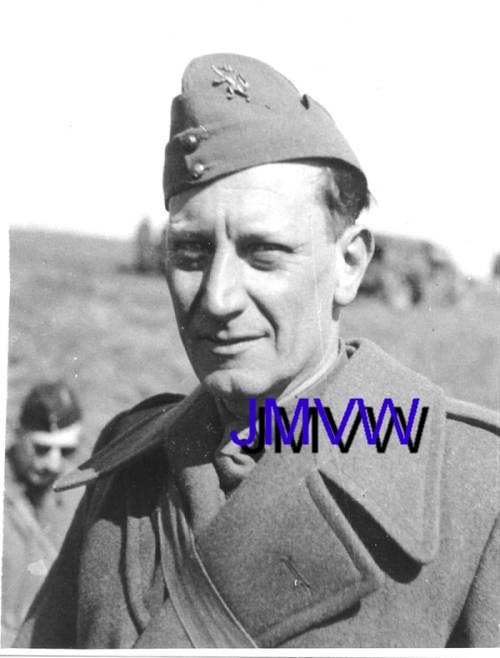 |
|
|
Right : Major CUMONT. |
|
Major PIRON |
FORMATION BADGES
Already in
1941 the 1st Battalion Belgian Fuseliers in the United Kingdom
had an emblem
that was used as letter-head, ornated envelopes, etc. .
It consisted
of a map of Great Britain in yellow, in a red triangle, with the
Royal monogram of King Leopold III
above the triangle, and with the text "1st Bn Belgian
Fuseliers in U.K." on the left and right side.
|
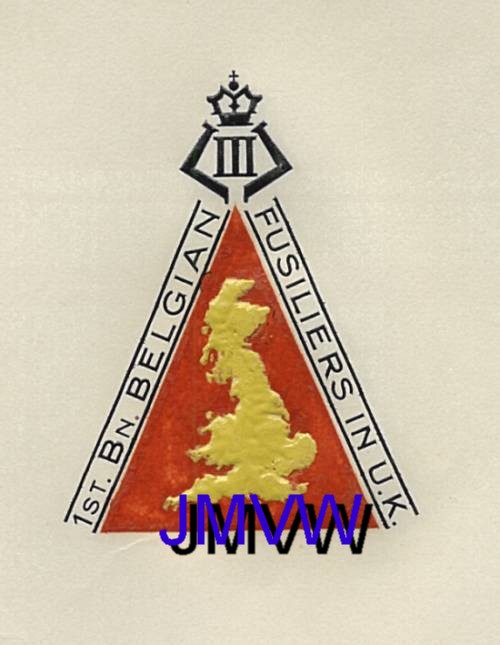 |
|
|
Letter with the heading. |
|
Detail of the heading. |
On October 23
1941 the Commanding Officer Major CUMONT requests the
authorisation
for using the emblem as a Formation Badge.
Only on July
29 1942 the Belgian Minister of Defence agrees to the creation
of the Formation Badge, but with some alterations.
A red map of Great Britain in a yellow triangle with a large black border.
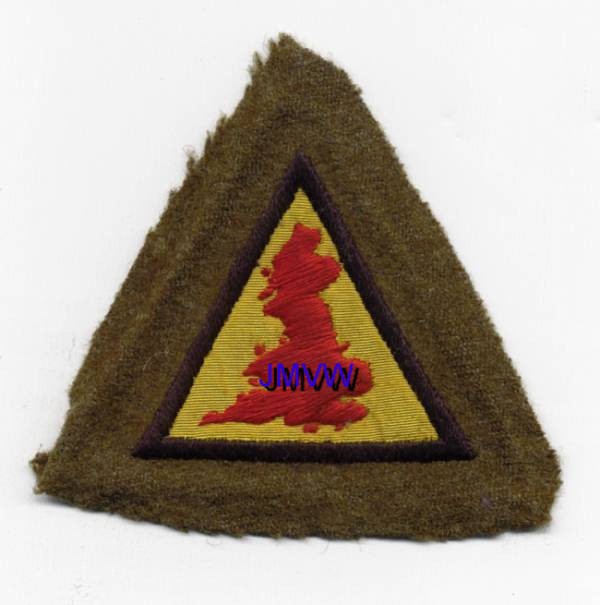 |
|
Prototype
of the Formation Badge of |
The Royal Monogram and the text had dissapeared.
Only some rare samples were made.
The Formation Badge was never worn.
During 1942 a formation badge was introduced in the A Company.
The formation badge was worn on the left arm.
A white skull with crossed bones, the Belgian National Colours, rainbow shape, above.
The whole on a blue shield with black border.
The wearing of this badge
was stopped once the battalion obtained the authorisation
to wear the formation badge of the 49th (West Riding) Division.
|
|
|
Formation Badge of the A Company, 1st Battalion Belgian Fuseliers in the United Kingdom, worn in 1942. |
When the 1st
Battalion Belgian Fuseliers came under the operational command of
the 49th (West Riding) Division,
the battalion was allowed to wear the Formation Badge of the
Division.
A white icebear, head down, on a white iceberg, the whole in a black rectangle.
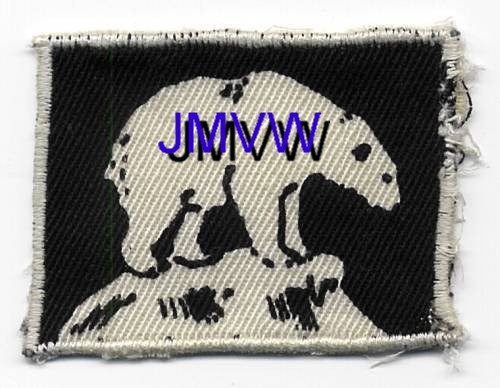 |
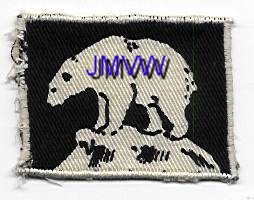 |
|
|
Formation Badge of the 49th (West
Riding) Infantry Division, 1st pattern. |
||
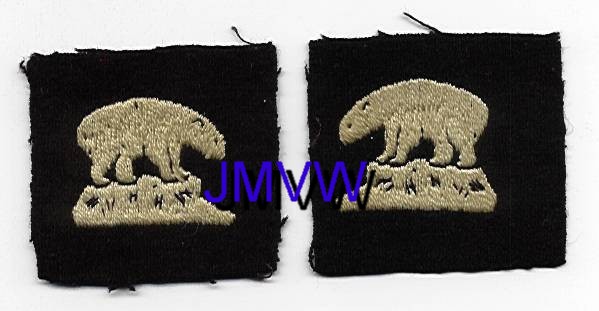 |
|
Formation
Badge of the 49th (West Riding) Infantry Division, 1st
pattern. |
|
|
Private
of the 1st Battalion Belgian Fuseliers |
|
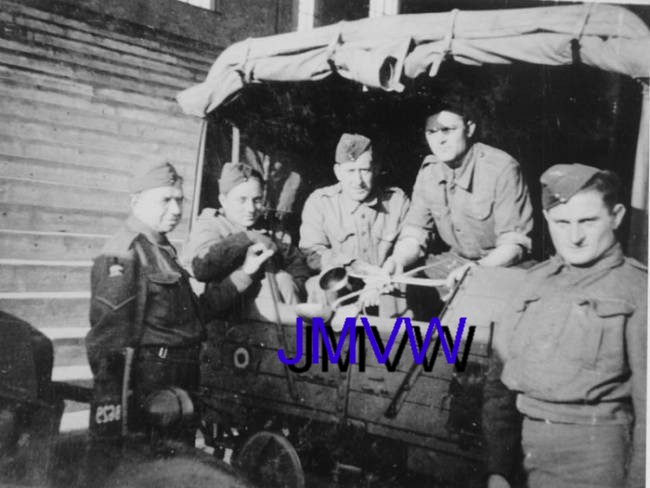 |
Fatigue party lead
by a Lance Corporal |
FIELD CAP INSIGNIA
Once the 1st
Battalion Belgian Fuseliers in the United Kingdom was created,
the men already wore a ribbon with the national colours black-yellow-red,
on the field cap.
The 1st Battalion Belgian Fuseliers in the UK just took over the use of the ribbon as "cap badge".
This already
changed on October 22 1940.
The ribbon was replaced by the well known ramping Belgian lion.
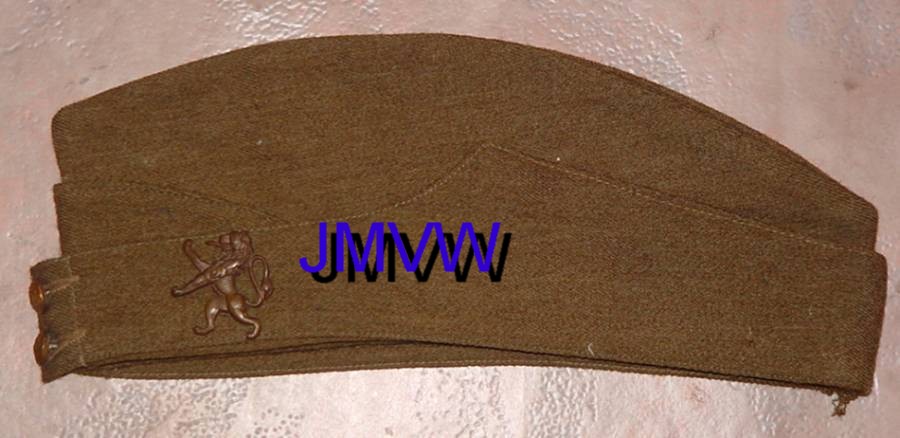 |
|
Field cap as worn from October 22 1940 until December 14 1940. |
From December 14, 1940 the ribbon with the national colours had to be worn under the lion.
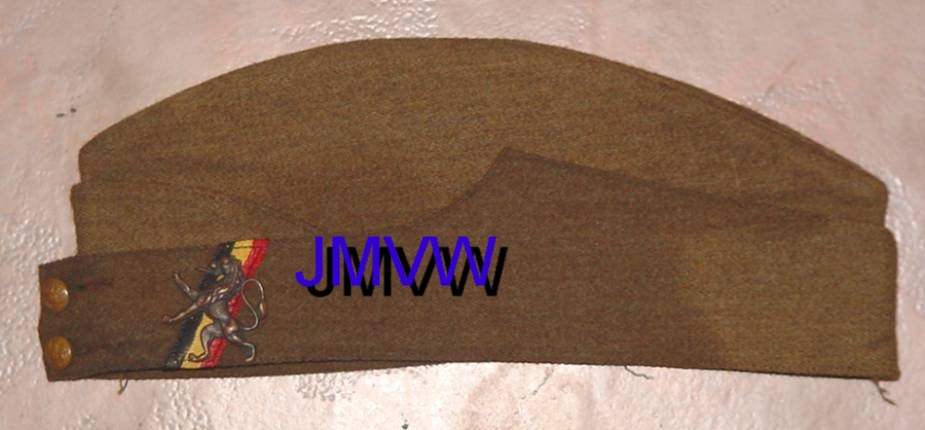 |
|
Field cap as worn from December 14 1940 until May 28 1941. |
Finally, on May 28, 1941 the instuctions concerning the uniforms the Army officialised the wearing of the Belgian lion.
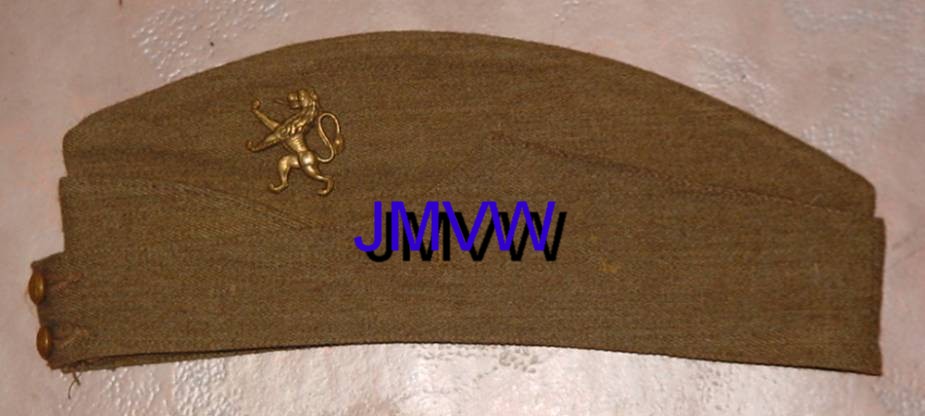 |
|
Lion as worn on the field cap from May 28 1941 until the end of the War. |
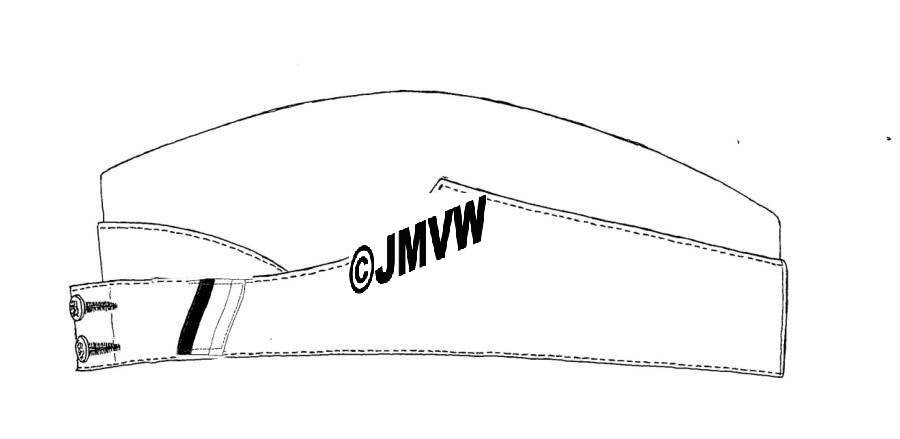 |
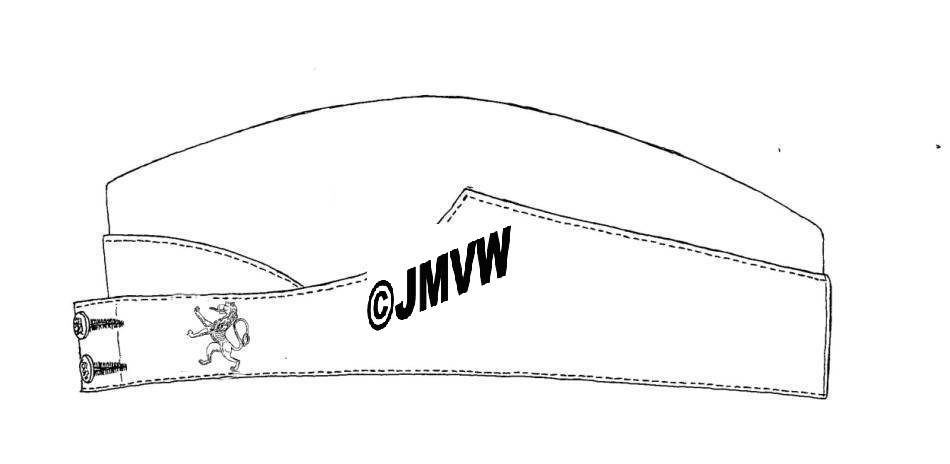 |
|
| Start until October 22 1940. | October 22 - December 14 1940. | |
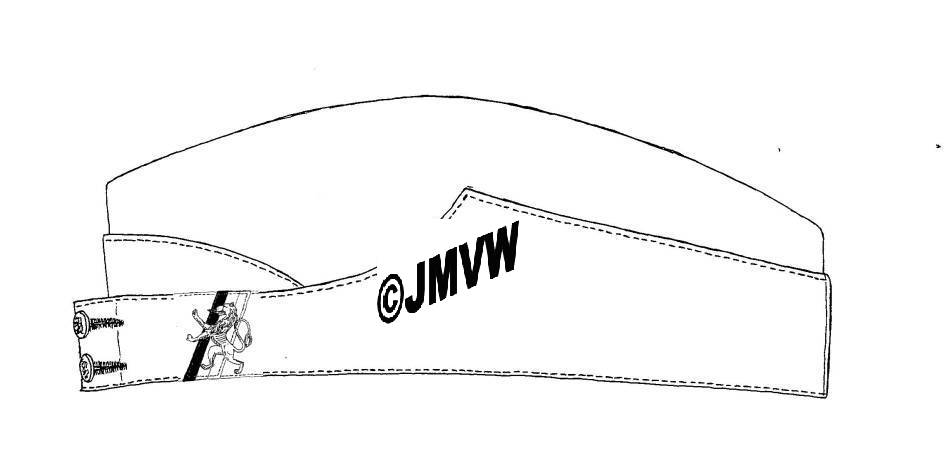 |
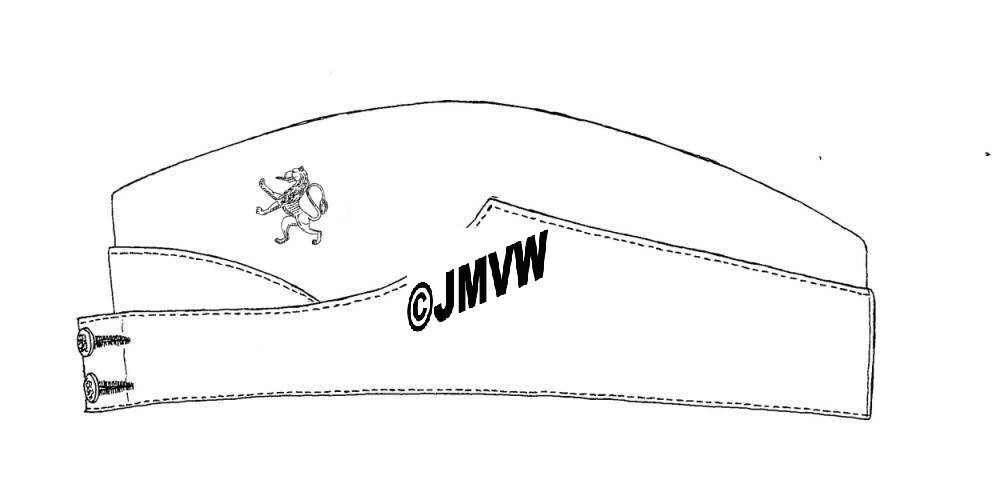 |
|
| December 14 1940 - May 28 1941. | May 28 1941 - end of War. |
The officers
wore a bronze lion,
the NCO's a silver lion,
and the men a brass lion.
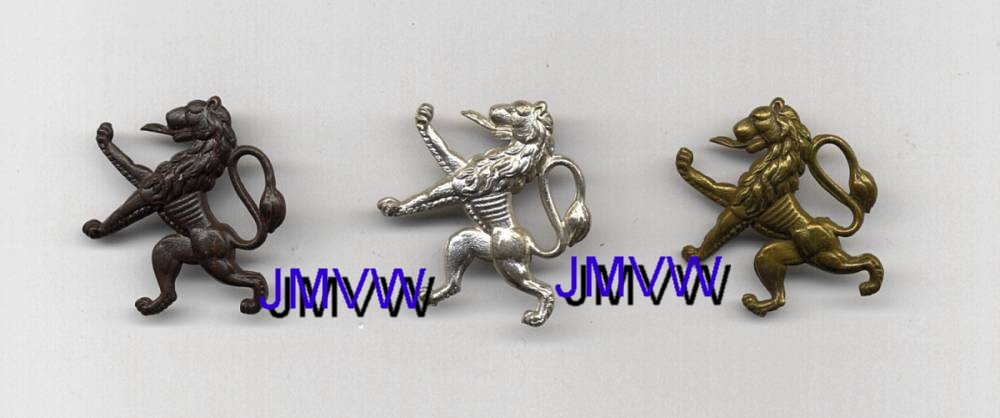 |
|
Field Cap Insignia worn by officers, NCO's, and men. |
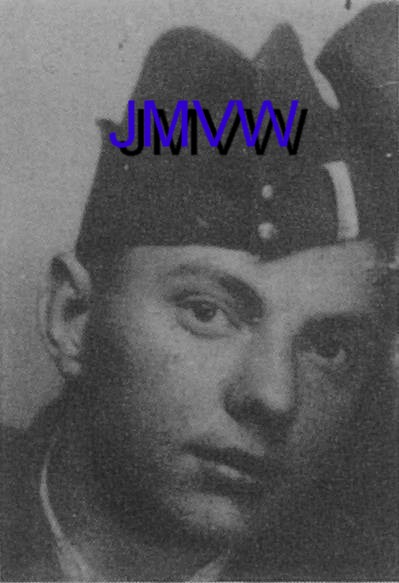 |
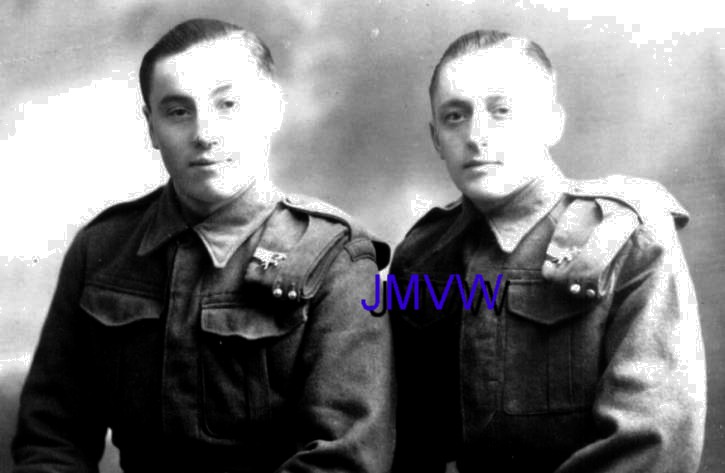 |
|
|
Private wearing the field cap with the national colours. |
Two privates wearing the field cap with the national colours and the Belgian lion. |